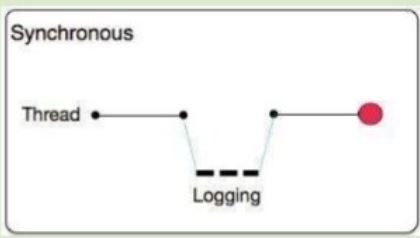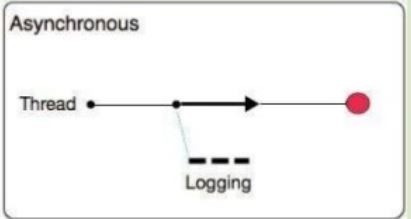Exam Details
Exam Code
:MCIA-LEVEL-1-MAINTENANCEExam Name
:MuleSoft Certified Integration Architect - Level 1 MAINTENANCECertification
:Mulesoft CertificationsVendor
:MulesoftTotal Questions
:116 Q&AsLast Updated
:Jun 01, 2025
Mulesoft Mulesoft Certifications MCIA-LEVEL-1-MAINTENANCE Questions & Answers
-
Question 91:
An organization's IT team follows an API-led connectivity approach and must use Anypoint Platform to implement a System AP\ that securely accesses customer data. The organization uses Salesforce as the system of record for all customer
data, and its most important objective is to reduce the overall development time to release the System API.
The team's integration architect has identified four different approaches to access the customer data from within the implementation of the System API by using different Anypoint Connectors that all meet the technical requirements of the
project.
A. Use the Anypoint Connector for Database to connect to a MySQL database to access a copy of the customer data
B. Use the Anypoint Connector for HTTP to connect to the Salesforce APIs to directly access the customer data
C. Use the Anypoint Connector for Salesforce to connect to the Salesforce APIs to directly access the customer data
D. Use the Anypoint Connector tor FTP to download a file containing a recent near-real time extract of the customer data
-
Question 92:
A Mule application is being designed for deployment to a single CloudHub worker. The Mule application will have a flow that connects to a SaaS system to perform some operations each time the flow is invoked.
The SaaS system connector has operations that can be configured to request a short-lived token (fifteen minutes) that can be reused for subsequent connections within the fifteen minute time window. After the token expires, a new token must be requested and stored. What is the most performant and idiomatic (used for its intended purpose) Anypoint Platform component or service to use to support persisting and reusing tokens in the Mule application to help speed up reconnecting the Mule application to the SaaS application?
A. Nonpersistent object store
B. Persistent object store
C. Variable
D. Database
-
Question 93:
What is a key difference between synchronous and asynchronous logging from Mule applications?
A. Synchronous logging writes log messages in a single logging thread but does not block the Mule event being processed by the next event processor
B. Asynchronous logging can improve Mule event processing throughput while also reducing the processing time for each Mule event
C. Asynchronous logging produces more reliable audit trails with more accurate timestamps
D. Synchronous logging within an ongoing transaction writes log messages in the same thread that processes the current Mule event
-
Question 94:
A travel company wants to publish a well-defined booking service API to be shared with its business partners. These business partners have agreed to ONLY consume SOAP services and they want to get the service contracts in an easily consumable way before they start any development. The travel company will publish the initial design documents to Anypoint Exchange, then share those documents with the business partners. When using an API-led approach, what is the first design document the travel company should deliver to its business partners?
A. Create a WSDL specification using any XML editor
B. Create a RAML API specification using any text editor
C. Create an OAS API specification in Design Center
D. Create a SOAP API specification in Design Center
-
Question 95:
An insurance provider is implementing Anypoint platform to manage its application infrastructure and is using the customer hosted runtime for its business due to certain financial requirements it must meet. It has built a number of synchronous API's and is currently hosting these on a mule runtime on one server
These applications make use of a number of components including heavy use of object stores and VM queues.
Business has grown rapidly in the last year and the insurance provider is starting to receive reports of reliability issues from its applications.
The DevOps team indicates that the API's are currently handling too many requests and this is over loading the server. The team has also mentioned that there is a significant downtime when the server is down for maintenance.
As an integration architect, which option would you suggest to mitigate these issues?
A. Add a load balancer and add additional servers in a server group configuration
B. Add a load balancer and add additional servers in a cluster configuration
C. Increase physical specifications of server CPU memory and network
D. Change applications by use an event-driven model
-
Question 96:
An organization's security requirements mandate centralized control at all times over authentication and authorization of external applications when invoking web APIs managed on Anypoint Platform.
What Anypoint Platform feature is most idiomatic (used for its intended purpose), straightforward, and maintainable to use to meet this requirement?
A. Client management configured in access management
B. Identity management configured in access management
C. Enterprise Security module coded in Mule applications
D. External access configured in API Manager
-
Question 97:
An organization is designing an integration Mule application to process orders by submitting them to a back-end system for offline processing. Each order will be received by the Mule application through an HTTPS POST and must be acknowledged immediately. Once acknowledged, the order will be submitted to a back-end system. Orders that cannot be successfully submitted due to rejections from the back-end system will need to be processed manually (outside the back-end system).
The Mule application will be deployed to a customer-hosted runtime and is able to use an existing ActiveMQ broker if needed. The ActiveMQ broker is located inside the organization's firewall. The back-end system has a track record of unreliability due to both minor network connectivity issues and longer outages.
What idiomatic (used for their intended purposes) combination of Mule application components and ActiveMQ queues are required to ensure automatic submission of orders to the back-end system while supporting but minimizing manual order processing?
A. An Until Successful scope to call the back-end system One or more ActiveMQ long-retry queues One or more ActiveMQ dead-letter queues for manual processing
B. One or more On Error scopes to assist calling the back-end system An Until Successful scope containing VM components for long retries A persistent dead-letter VM queue configured in CloudHub
C. One or more On Error scopes to assist calling the back-end system One or more ActiveMQ long-retry queues A persistent dead-letter object store configured in the CloudHub Object Store service
D. A Batch Job scope to call the back-end system An Until Successful scope containing Object Store components for long retries A dead-letter object store configured in the Mule application
-
Question 98:
An organization's security policies mandate complete control of the login credentials used to log in to Anypoint Platform. What feature of Anypoint Platform should be used to meet this requirement?
A. Enterprise Security Module
B. Client ID Secret
C. Federated Identity Management
D. Federated Client Management
-
Question 99:
What is a defining characteristic of an integration-Platform-as-a-Service (iPaaS)?
A. A Cloud-based
B. No-code
C. Code-first
D. On-premises
-
Question 100:
When using Anypoint Platform across various lines of business with their own Anypoint Platform business groups, what configuration of Anypoint Platform is always performed at the organization level as opposed to at the business group level?
A. Environment setup
B. Identity management setup
C. Role and permission setup
D. Dedicated Load Balancer setup
Related Exams:
Tips on How to Prepare for the Exams
Nowadays, the certification exams become more and more important and required by more and more enterprises when applying for a job. But how to prepare for the exam effectively? How to prepare for the exam in a short time with less efforts? How to get a ideal result and how to find the most reliable resources? Here on Vcedump.com, you will find all the answers. Vcedump.com provide not only Mulesoft exam questions, answers and explanations but also complete assistance on your exam preparation and certification application. If you are confused on your MCIA-LEVEL-1-MAINTENANCE exam preparations and Mulesoft certification application, do not hesitate to visit our Vcedump.com to find your solutions here.

